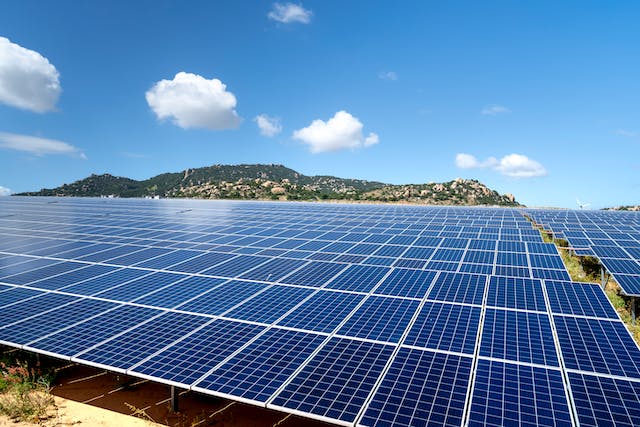The sun has held immense importance for humans, from the most primitive of times to the most recent of times. It has held a lot of spiritual importance for different cultures and religion through history. For example, ancient Chinese believed there were 10 suns and the Egyptians, Sumerians, Akkadians, and the Greeks all worshipped different gods but related them with the sun. Humans planned out entire days based on the position of the Sun.
All of this was because they believed the sun has power and was a source of life, which is true. The power is used to light up houses or help ease different processes in today’s age. Let’s learn more about solar energy and related interesting facts.
Solar energy and solar power
Solar energy is the capability of the sun. It is able to give off light and heat, which are the two elements that constitute as energy. The light that comes from the sun includes infrared radiations, ultraviolet rays, and visible light. This source of power is the most abundant ever!
When this light is harnessed with the help of different technologies, like solar panels, to name one, the product that is achieved is referred to as solar power. Harnessing the energy and using it wisely can provide electric power to industries and houses. It is also used singularly for one specific appliance or device as this is so easy to create and can be portable.
Solar energy is a renewable source of energy and does not contribute to the deterioration of the planet’s environment and life.
Discovery and history
The sun has rightfully been considered an asset throughout history, and its power has been put to good use. Upon research of ancient civilizations, it was found that they used to convert the sun’s rays into fire with the help of a magnifying glass, hence creating power or fuel for amenities.
Modern solar technology, however, was discovered by Edmond Becquerel in 1839. Upon experimenting, he found out that a cell created more energy when placed in the light than in the shade. This phenomenon was the photovoltaic effect. Further discoveries led to the version of solar technology that we use today.
Types
There are two types of solar energy technologies. Namely, photovoltaics and concentrating solar-thermal power. Let’s look into them.
Photovoltaics
Photovoltaics is also referred to as PV. It has large panels that constitute multiple photovoltaic cells. These cells absorb the sunlight when the sun shines on them, and this leads to the creation of an electric field inside. As a result, electrical charges flow freely. Electricity is created.
PV setups are found on rooftops, on open land, walls, or floating on water. These are more commonly known as solar panels and can be installed in houses.
Concentrating solar-thermal power
Concentrating solar-thermal power is also referred to as CSP. A vast set up of mirrors is placed under direct sunlight. These mirrors reflect the light at such an angle that it hits a receiver, which converts it into heat. The heat is used to create steam which provides power to turbines, or this heat is directly used in processes that require heating.
CSP setups are located in massive, open spaces with ample of sunlight. The largest solar plant deploying CSP is in the Mojave Desert in California, USA.
Solar energy’s other contributions
Solar energy does not just produce solar power, it also contributes towards the production of wind power. The existence of wind on Earth is a result of the heat from the sun, among other factors. The heating of the atmosphere created wind flows. The wind turns windmills, which power generators that are able to convert the mechanical energy into electrical energy and provide electric power to industries or residential areas.
So, wind power generated from wind can technically be categorized as solar power!
Cost
Solar power is inexpensive compared to fossil fuels and other renewable counterparts. The main expense is of the necessary equipment that is needed to run a solar power electric system in a home. The solar panels, batteries, and the set-up to make connections around a home cost a good amount of money. However, this is a one-time investment into a cleaner form of energy, and it pays off well. The only cost incurred later is for the maintenance of the system.
On average, a 5-kilowatt system costs 3-5 dollars per watt. The cost can be calculated based on how much energy usage a particular house requires.
Benefits
Solar power is the most rapidly adopted form of renewable energy worldwide. This is not only due to it being a trend but also due to some valid reasons mentioned below.
Abundant
The sun produces an excessive amount of energy, and scientists say it will outlast human life on earth. The stats prove it. One hundred seventy-four thousand terawatts of energy hit the Earth at any given moment, and one hour of sunlight is enough to provide power to the Earth for an entire year. Solar power is renewable and will likely never die out; this makes it reliable and easy to access.
Pollution-free
No harmful gases are produced in the production of solar power. It uses a natural source and does not add to the world’s environmental, noise, or land pollution.
Cost-effective
Solar power is a one-time investment and is not that expensive. It gives you your money’s worth. As part of their plans to make their country clean, many governments give out subsidies on the purchase of solar energy systems, which cuts costs even more.
Easy repair
Components of solar power are the easiest to repair and set up, which is highly convenient.
Good for the economy
The clean energy sector has generated a multitude of jobs. Only in the year 2016, two hundred and sixty thousand people were employed in solar energy. The availability of green jobs helps the economy battle unemployment, which occurs due to redundancies in the non-renewable energy sector.
Moreover, increasing investments in solar energy help drive the GDP up.
Solar power production in green plants
Solar power is not produced by modern technology alone. It is produced naturally in plants too, for the usage of the plant itself. It takes place to provide energy to the plant to perform its basic survival processes and function; the process through which energy is produced is called photosynthesis. Photosynthesis is impossible in the absence of sunlight.
The crux
The looming climate crisis is forcing all of us to take proactive steps to shift towards a cleaner lifestyle with a lower carbon footprint. Shifting to solar seems like a good place to start, especially given all the benefits that come with it. It is safe and reliable.
All of these interesting facts must have equipped you to make an informed decision about this huge shift towards conscious living. Making this significant shift will help promote a greener and healthier earth for generations to come.

